Some birds are meant to fly free—and caging them is like trapping a sunset in a box. Their colors dazzle. Their songs fill the sky. But behind their beauty is a wild spirit that refuses to be tamed. Locking them up doesn’t just clip their wings—it breaks their hearts. These majestic creatures crave open skies, forest canopies, and the freedom to soar. And while they may look like perfect pets, their needs are far too great for any living room. Still, not all birds are the same. Some species actually do adapt well to life at home—bringing joy, chatter, and companionship without losing themselves. Let’s draw the line between the birds who need the wind in their feathers and the ones that can find happiness perched beside you.
Scarlet Macaw

The Scarlet Macaw, a vivid parrot of the Amazon, captivates with its brilliant plumage. Known for its intelligence and playful antics, this bird thrives in the lush rainforests of South America.
Its strong, curved beak can crack nuts with ease, while its striking red, yellow, and blue feathers create a visual spectacle. Sadly, habitat destruction threatens its existence, reminding us of the importance of conservation efforts.
While tempting to keep as a pet, its complex social and environmental needs make it better suited to the wild. Admire its beauty from afar.
Bald Eagle
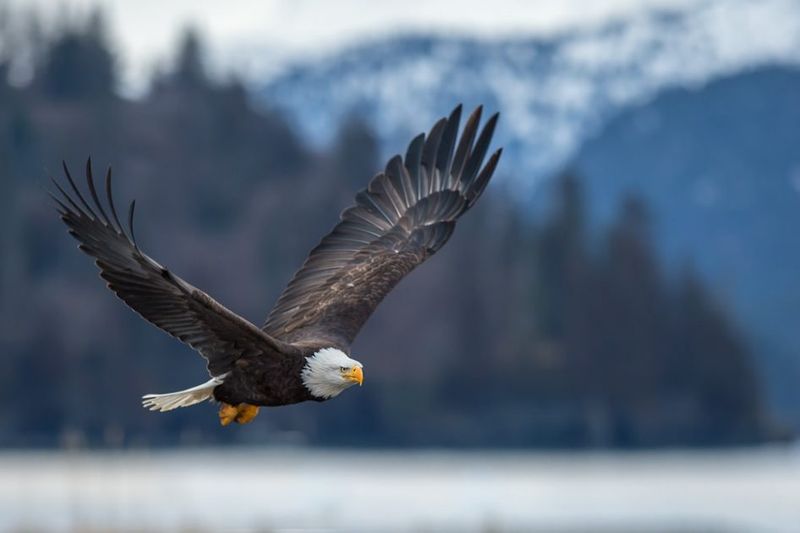
The Bald Eagle, symbol of freedom and the national bird of the USA, is an awe-inspiring sight. With a wingspan reaching over seven feet, it gracefully soars through the skies.
Preferring the vast wilderness, this raptor excels at hunting fish, its primary diet, in serene lakes and rivers. Conservation efforts have helped its populations rebound from near extinction.
In captivity, they lose the wild freedom that defines their character. Witnessing the Bald Eagle in its natural habitat remains an unforgettable experience, capturing the essence of American wilderness.
Peacock

Peacocks, with their iridescent tail feathers, are nature’s artists. Native to India, these birds flaunt an elaborate fan of colors, mesmerizing all who see them.
Not just for show, their plumage plays a crucial role in attracting mates. In the wild, their calls echo through forests, creating a symphony of nature.
While stunningly beautiful, peacocks require large spaces and specific environments, making them unsuitable for captivity. They are best appreciated in their natural splendor, roaming free and wild.
Resplendent Quetzal
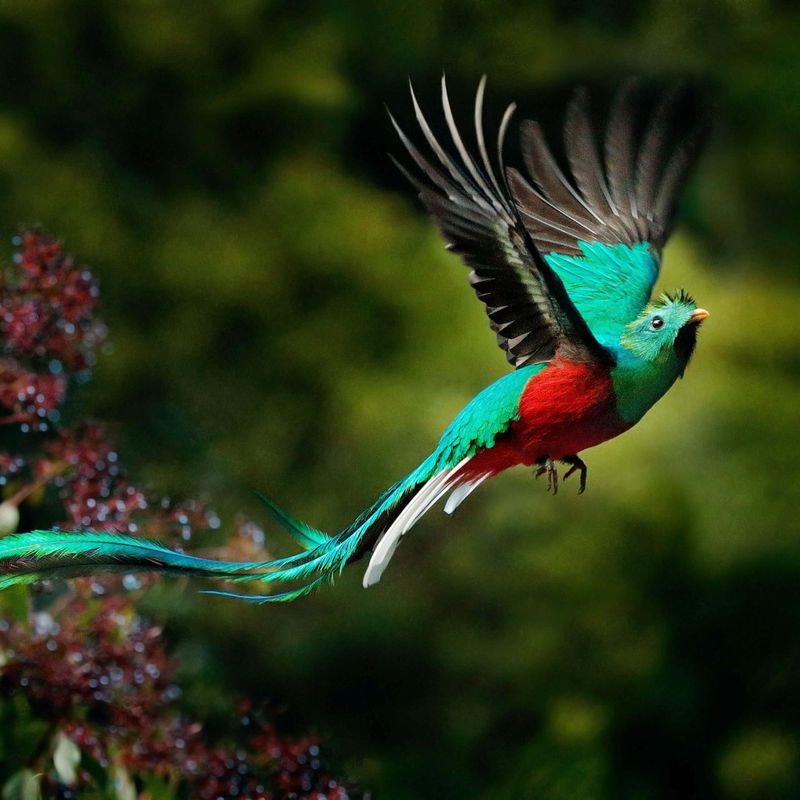
The Resplendent Quetzal, with its shimmering emerald tail, embodies the ethereal beauty of Central America’s cloud forests. Revered by ancient civilizations, this bird symbolizes freedom and wealth.
Its vibrant plumage and elusive nature make it highly sought-after by birdwatchers. Despite its allure, the Quetzal’s delicate habitat and specialized diet mean it cannot thrive in captivity.
Efforts to preserve its habitat are crucial. Marvel at the Quetzal’s grace and mystery as it flits through misty forests, a living jewel of the wild.
Flamingo

Flamingos, with their iconic pink hue, are elegant creatures gracing the shores of Africa and the Americas. Their color comes from a diet rich in carotenoids found in algae and crustaceans.
These social birds are often seen in large flocks, performing synchronized dances during courtship. Their unique, filter-feeding beaks allow them to thrive in saline environments.
Confinement can dim their vibrant charm. To truly appreciate Flamingos, one must witness their graceful ballet in the wild, a testament to nature’s creativity.
Snowy Owl
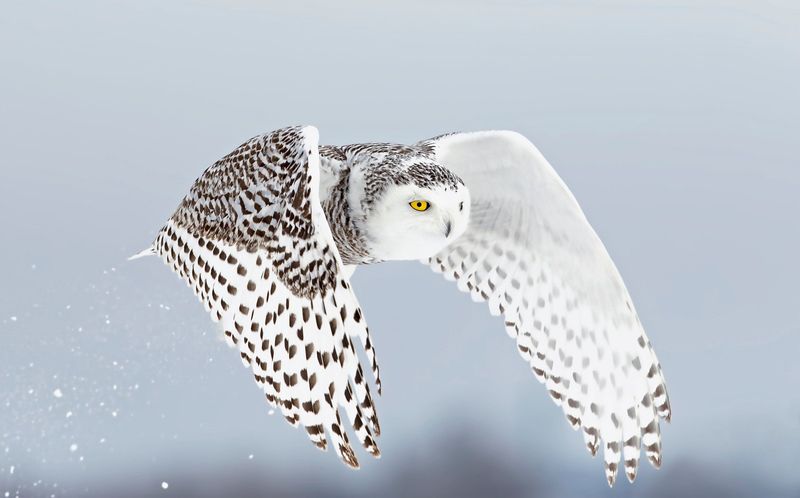
With striking white feathers and piercing yellow eyes, the Snowy Owl is a phantom of the Arctic. Known for its silent flight and keen hunting skills, it thrives in the tundra’s harsh conditions.
This owl is a master of camouflage, blending seamlessly into the snow-covered landscape. Its diet consists mainly of small mammals, which it hunts with precision.
In captivity, its natural instincts are stifled. Observing the Snowy Owl in its frozen domain reveals the wonders of adaptation and survival in the wild.
Cockatiel

The Cockatiel, with its cheerful whistle and perky crest, is a beloved pet. Originating from the Australian outback, it’s known for forming strong bonds with owners.
In a home setting, Cockatiels thrive on interaction and stimulation, mimicking sounds and whistling tunes. Their gentle nature and manageable size make them suitable companions.
With proper care, including a varied diet and social engagement, they flourish outside the wild. Their playful antics and affectionate behavior make Cockatiels delightful housemates, bringing joy to any household.
Budgerigar

Budgerigars, or ‘budgies,’ are small parrots native to Australia, cherished for their vibrant colors and lively personalities. These charming birds easily adapt to domestic life.
Known for their ability to mimic speech, budgies are interactive and entertaining pets. They thrive in environments with ample social interaction and mental stimulation.
Their compact size makes them ideal for homes, though they require attention and a nutritious diet. Budgerigars bring a splash of color and song, proving that sometimes, great things come in small packages.
Zebra Finch
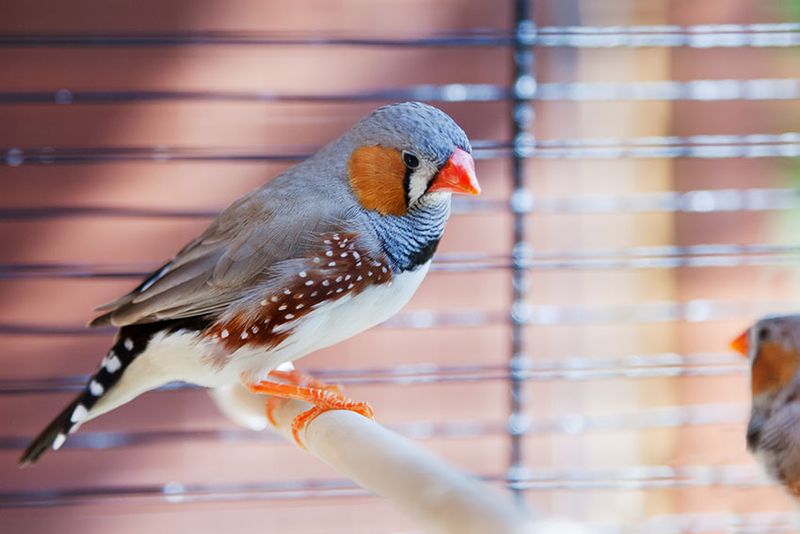
Zebra Finches, with their distinctive patterns and cheerful chirps, are charming additions to any home. Originating from the grasslands of Australia, they are known for their social behavior.
These small birds thrive in pairs or groups, often seen flitting about energetically. Their easy care requirements and delightful songs make them popular among bird enthusiasts.
In a well-maintained environment, Zebra Finches flourish, adding life and music to domestic spaces. Their lively nature and simple needs make them excellent companions for bird lovers.
African Grey Parrot

Renowned for its intelligence and ability to mimic human speech, the African Grey Parrot is a captivating companion. Native to the rainforests of West and Central Africa, this parrot is highly social.
Its cognitive abilities and affectionate nature allow it to form deep bonds with owners. In a stimulating home environment, it thrives, enjoying interactive play and learning new phrases.
While requiring significant attention, the rewards are plentiful. An African Grey can be a lifelong friend, providing companionship and entertainment with its charming quirks.
Canary
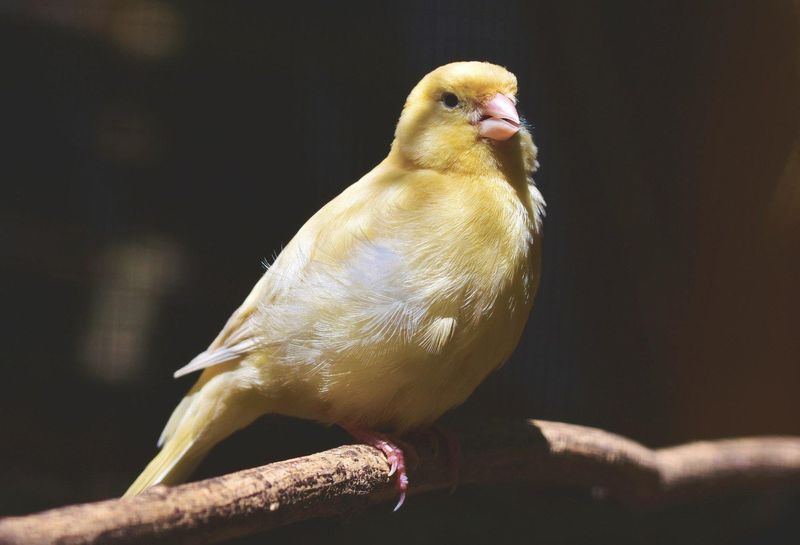
Canaries, known for their melodious songs, have long enchanted bird enthusiasts. Originating from the Canary Islands, these small songbirds bring joy with their vibrant tunes.
In captivity, canaries thrive in spacious cages with plenty of sunlight. Their care is straightforward, requiring fresh food, clean water, and regular interaction.
Known for their vibrant colors and sweet songs, they are ideal for those seeking a low-maintenance pet that still brings vibrancy to a home. Canaries brighten any room with their cheerful presence.
Lovebird
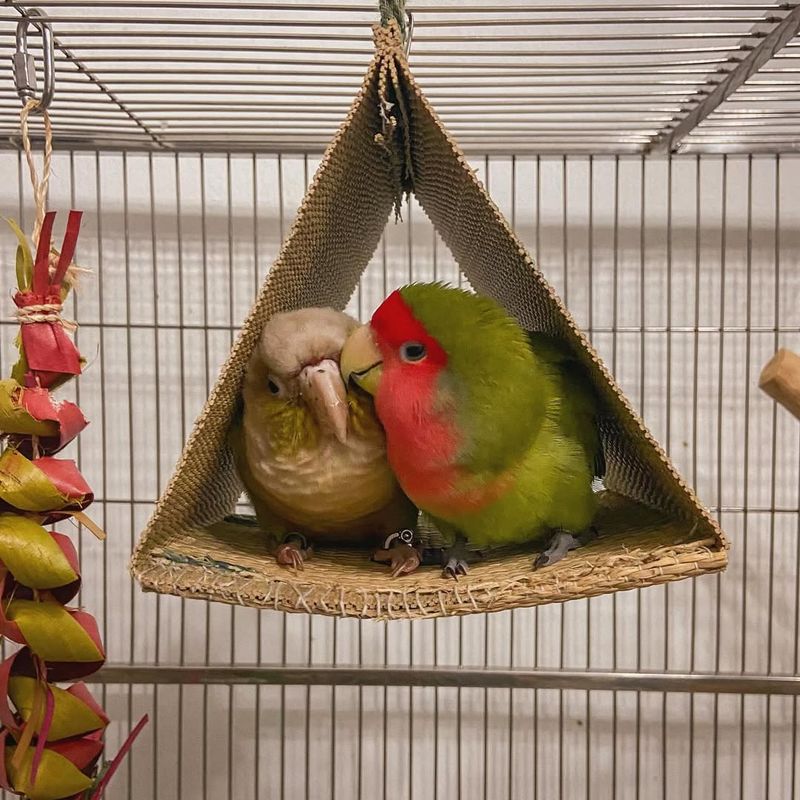
With a name that speaks volumes, Lovebirds are symbols of affection and companionship. Native to Africa, these small parrots are known for their strong pair bonds.
In a home setting, Lovebirds flourish with social interaction and plenty of mental stimulation. Their playful nature and bright plumage make them delightful pets.
Proper care involves a balanced diet and attention, ensuring they remain healthy and happy. Lovebirds bring warmth and color to any household, embodying the joy of connection and companionship.
Sun Conure
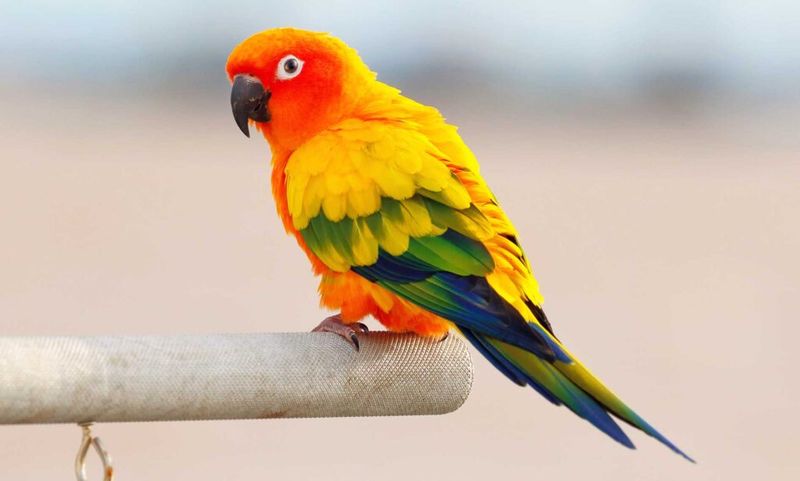
Sun Conures, with their fiery feathers, light up any room. Originating from South America, they are known for their playful and vocal nature.
These parrots thrive in environments where they receive plenty of attention and stimulation. Their ability to learn tricks and mimic sounds makes them engaging companions.
However, their loud calls mean they are best suited for homes that can accommodate their vocal nature. With proper care, Sun Conures become lively and affectionate pets, spreading sunshine wherever they go.
Blue Jay
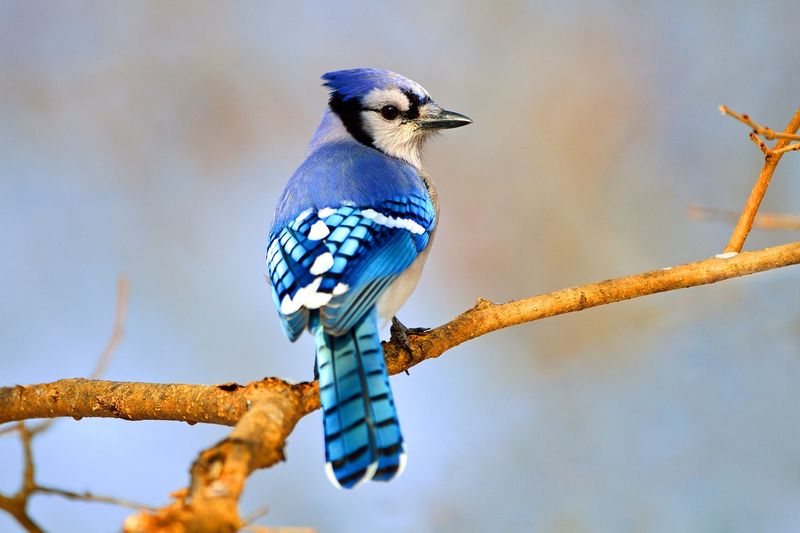
The Blue Jay, with its striking blue and white plumage, is a familiar sight in North American woodlands. Known for their intelligence and complex social behavior, these birds are a dynamic part of the ecosystem.
They are skilled mimics, often imitating the calls of other birds. In the wild, Blue Jays play a crucial role in seed dispersal, supporting forest growth.
In captivity, their need for space and social interaction is difficult to meet. Observing Blue Jays in their natural habitat reveals their true character and beauty.
Kingfisher

Kingfishers, with their dazzling colors and agile flight, are masters of the waterways. Found across Europe and Asia, they are known for their expert fishing skills.
These birds have keen eyesight, allowing them to spot prey from above before executing a swift dive. Their beauty and hunting prowess make them fascinating subjects for nature lovers.
In their natural riverside habitats, Kingfishers thrive, showcasing the wonders of avian adaptation. Their specialized diets and territorial nature mean they are best admired from a distance.
Gouldian Finch
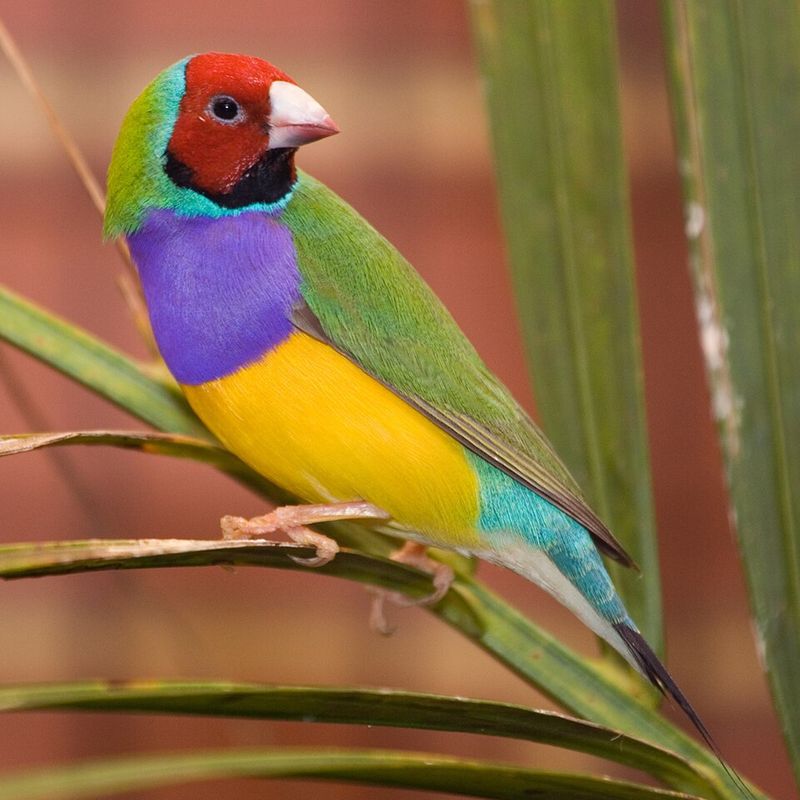
The Gouldian Finch, a living rainbow, graces the woodlands of northern Australia. With its kaleidoscope of colors, it’s a favorite among bird fanciers.
These finches are social creatures, thriving in environments with plenty of interaction. In captivity, their vivid appearance and gentle nature make them popular pets.
However, they require specific care and a varied diet to maintain their health. Gouldian Finches add a splash of color and charm to any aviary, captivating all who see them.
Barn Owl
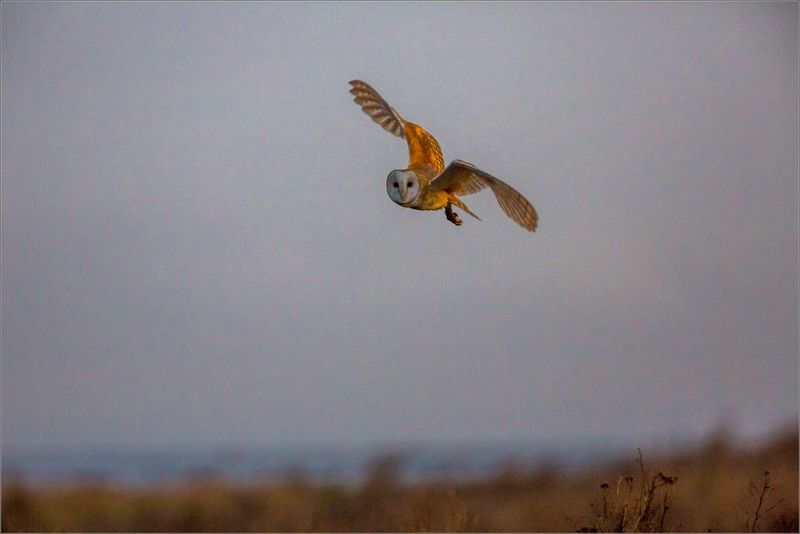
The ghostly Barn Owl, with its heart-shaped face and silent flight, is a master of the night. Found across various continents, it hunts with precision, relying on acute hearing.
In the wild, Barn Owls control rodent populations, proving valuable to ecosystems. Their eerie calls and graceful presence add mystique to twilight landscapes.
Captivity can dull their natural instincts. Witnessing a Barn Owl in its hunting ground offers a glimpse into the fascinating world of nocturnal predators.
Hyacinth Macaw

The Hyacinth Macaw, a dazzling jewel of the rainforest, boasts a brilliant blue plumage that captures the eye. This largest parrot in the world thrives in the wild, where it can soar freely and express its playful personality. Despite its friendly demeanor, it requires vast spaces and a complex diet of nuts and seeds.
Its strong beak, capable of cracking coconuts, is a testament to its strength and adaptability. Sadly, its beauty makes it a target for illegal pet trade, emphasizing the need for conservation efforts. The Hyacinth Macaw belongs to the skies, not cages.

